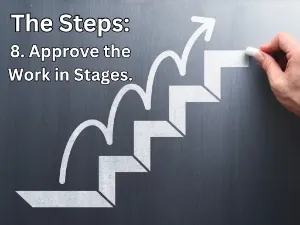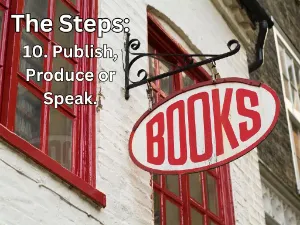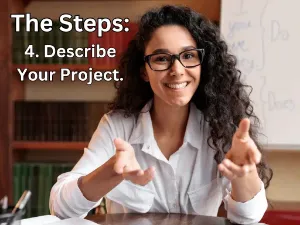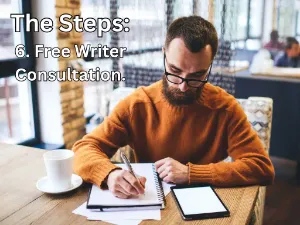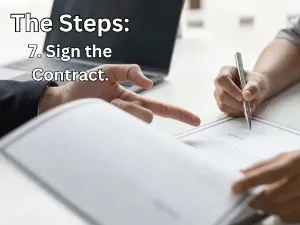Journalism striptease: Give you information but not too much too quickly!
By Michael McKown
Let’s rewind the clock a bit. Back in the day, when ink-stained fingers and the clack of typewriters ruled the newsroom, journalism students like me were drilled on the sacred art of the headline. Professors would pace the room, barking that a headline had to be a tight little nugget of truth, summing up the story in a handful of words.
“Dog Bites Man” meant exactly that, and you’d find out who, where, and how bad the bite was in the first sentence. The article itself? A neatly inverted pyramid, with the juiciest, most critical facts stacked right at the top, trickling down to the less vital stuff, like what the dog had for breakfast, by the end. It was clean, it was clear, and it respected your time.
If legendary reporter Edward R. Murrow were alive today, he’d probably weep into his fedora at what’s happened since.
Fast forward to now, and the game’s changed so much you’d barely recognize it. Open any news site today, and you’re hit with headlines like “Republicans Love This Word – Yet They Seem To Not Understand It At All.” Or “What Happened Next Shocked Everyone.” What word? Who’s shocked? Good luck figuring that out without clicking.
And once you’re in, the story doesn’t spill the beans right away. You’ll wade through three paragraphs of fluff — maybe some vague scene-setting about the weather or a random quote from a bystander — before you get to the point. It’s maddening. If you’re thinking, “I can’t tell what this story is about from this headline, who wrote this shit?” you’re not alone!
It’s a striptease. It’s written to entice you to click. Or to toss some money on the stage. Or to stuff cash in a young lady’s g-string.
So why the switch? The short answer is money, but let’s unpack that. Back when newspapers were king, they made their cash from advertising. Subscriptions and newsstand sales were important but far less so than advertising. The deal was simple: deliver the news fast and straight, or readers would toss you aside for the competition.
But the internet flipped the script. Suddenly, big dollars didn’t come from display and classified advertising; they came from clicks, page views, and how long you could keep someone’s eyeballs glued to the page. Enter the trackers, those sneaky little algorithms that watch your every move online. They don’t care if you’re informed; they care if you’re hooked.
Think about it like fishing. Old-school headlines were a net: scoop up the facts, deliver them to the reader, done. Today’s teaser headlines? They’re bait on a hook, dangling just enough to make you bite. “Man Claims Alien Abduction Changed His Life” sounds juicy, right? You click, expecting a wild tale of UFOs and little green men, only to slog through four paragraphs about his childhood in Ohio before learning the “abduction” was a dream he had while drunk. The Washington Post ran a piece in 2019 noting how digital ad revenue had overtaken print by a landslide: $129 billion to $19 billion in the U.S. alone. Sites live or die by those clicks, so they’ve mastered the art of the tease.
It’s not just headlines, either. The way articles are written now is a deliberate slow burn. That inverted pyramid from journalism school? Flipped on its head. Burying the lede — the most crucial bit of the story — way down the page keeps you scrolling, racking up ad impressions. A 2022 study from the Reuters Institute found that online readers often bail after 30 seconds. So writers pad the top with fluff to stretch that time out, knowing full well you might never reach the good stuff.
Take a recent article I stumbled across: “Mystery Object Falls From Sky, Experts Baffled.” First paragraph? A farmer describing his cows mooing. Second? How cloudy it was that day. Third? A quote from a guy who saw it but didn’t know what it was. Finally, in paragraph four, you learn it was a chunk of space debris. Journalism profs would’ve had a stroke.
This shift royally pisses off anyone who grew up on the old rules. Imagine Walter Cronkite squinting at a screen, muttering, “Where’s the damn story?” It’s not just nostalgia, though. There’s a real loss here. Headlines used to be a public service: quick, reliable snapshots of the world. Now they’re clickbait traps, and the meat of the story’s hidden under layers of digital fat. It’s like ordering a steak and getting a plate of garnish with the meat shoved under the table. Sure, the site gets its ad bucks, but you’re left hungry for the point.
Not only that, but you may well learn to ignore vague headlines. What they lead to is your wasted time.
The ad tech behind this is wild, too. Companies like Google and Meta track every click, every second you linger, feeding that data into algorithms that fine-tune the bait. A 2023 report from eMarketer predicted digital ad spending would hit $740 billion globally by 2025, up from $521 billion in 2021. That’s a lot of incentive to keep you guessing.
Writers aren’t dumb; they’re just playing the hand they’re dealt. One editor I know, he’s anonymous here because he still wants his job, told me, “We’re not journalists anymore; we’re slot machine designers. Pull the lever, see if they stay.” He wasn’t laughing when he said it.
And the examples keep piling up. Last week, I saw “Woman’s Secret to Living Past 100 Revealed!” on some health site. Spoiler: it’s not revealed until you’ve scrolled past ads for diet pills and a tangent about her pet cat. Or how about “Politician’s Gaffe Goes Viral”? You’ll read about the room’s decor before you find out what he said. It’s a far cry from the days when “Man Walks on Moon” told you everything you needed to know before you even picked up the paper.
Here’s the kicker: this isn’t going away. As long as ads pay the bills, the tease-and-bury strategy will rule. But it’s a shame, isn’t it? We’ve traded clarity for suspense, facts for games. An old-school editor would look at today’s news and see a circus, not a service. They’d probably say we’ve lost the plot — and they wouldn’t be wrong.
Next time you click a teaser and find yourself lost in paragraph three, wondering where the story went, just picture some grizzled newspaper editor in a tweed jacket, snarling at a young reporter who put the facts several paragraphs in. He’s demanding better from his writer. And honestly, so should we all.


